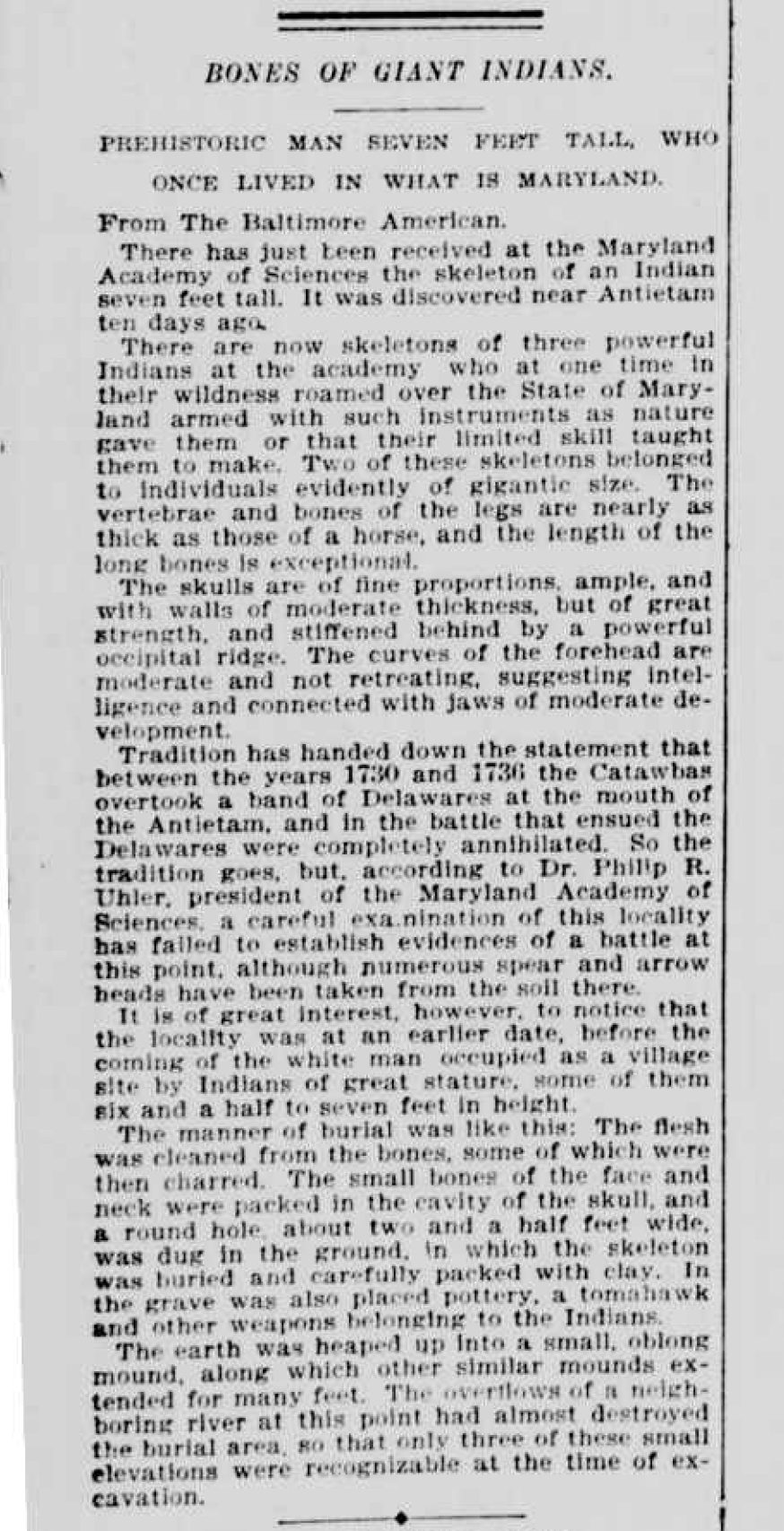Antietam, Maryland Giant Skeletons
 BONES OF GIANT INDIANS.
BONES OF GIANT INDIANS.
PREHISTORIC
From The Baltimore American
There has just been received at the Maryland Academy of Sciences the skeleton of an Indian seven feet tall. It was discovered near Antietam ten days ago.
There are now skeletons of three powerful Indians at the academy who, at one time in their wildness, roamed over the state of Maryland armed with such instruments as nature gave them or that their limited skill taught them to make. Two of these skeletons belonged to individuals evidently of gigantic height. The vertebrae and bones of the legs are nearly as thick as those of a horse, and the length of the long bones is exceptional.
The skulls are of fine proportions, ample, and with walls of moderate thickness but of great strength, and stiffened behind by a powerful occipital ridge. The curves of the forehead are moderate and not retreating, suggesting intelligence and connected with jaws of moderate development.
Tradition has handed down the statement that between the years 1700 and 1750 the Catawba overtook a band of Delawares at the mouth of the Antietam, and in the battle that ensued, the Delawares were completely annihilated. So the tradition goes, but according to Dr. Philip R. Uhler, president of the Maryland Academy of Sciences, a careful examination of this locality has failed to establish evidences of a battle at this point, although numerous spear and arrowheads have been taken from the soil there.
It is of great interest, however, to notice that the locality was, at an earlier date, before the coming of the white man, occupied as a village site by Indians of great stature, some of them six and a half to seven feet in height.
The manner of burial was like this: The flesh was cleaned from the bones, some of which were then charred. The small bones of the face and neck were packed in the cavity of the skull, and a round hole about two and a half feet wide was dug in the ground, in which the skeleton was buried and carefully packed with clay. In the grave were also placed pottery, a tomahawk, and other weapons belonging to the Indians. The earth was heaped up into a small, oblong mound, along which other similar mounds extended for many feet. The overflow of a neighboring river at this point had almost destroyed the burial area, so that only three of these small elevations were recognizable at the time of excavation.
- New-York tribune., November 21, 1897, Page 11, Image 41
- About New-York tribune. (New York [N.Y.]) 1866-1924
- Salt Lake Herald-Republican | 1897-11-14 | Page 20 | Bones of Giant Indians
- Baltimore America
- The Sterling Democrat, October 14, 1898
- The Colorado Weekly Chieftain, December 23, 1897
- Kansas City Journal, 1897.
- The Colorado Daily Chieftain, December 17, 1897
- The Riverine Herald (Echuca, Vic. : Moama, NSW : 1869 – 1954; 1998 – 2002) Fri 28 Jan 1898
Page 4
Comment